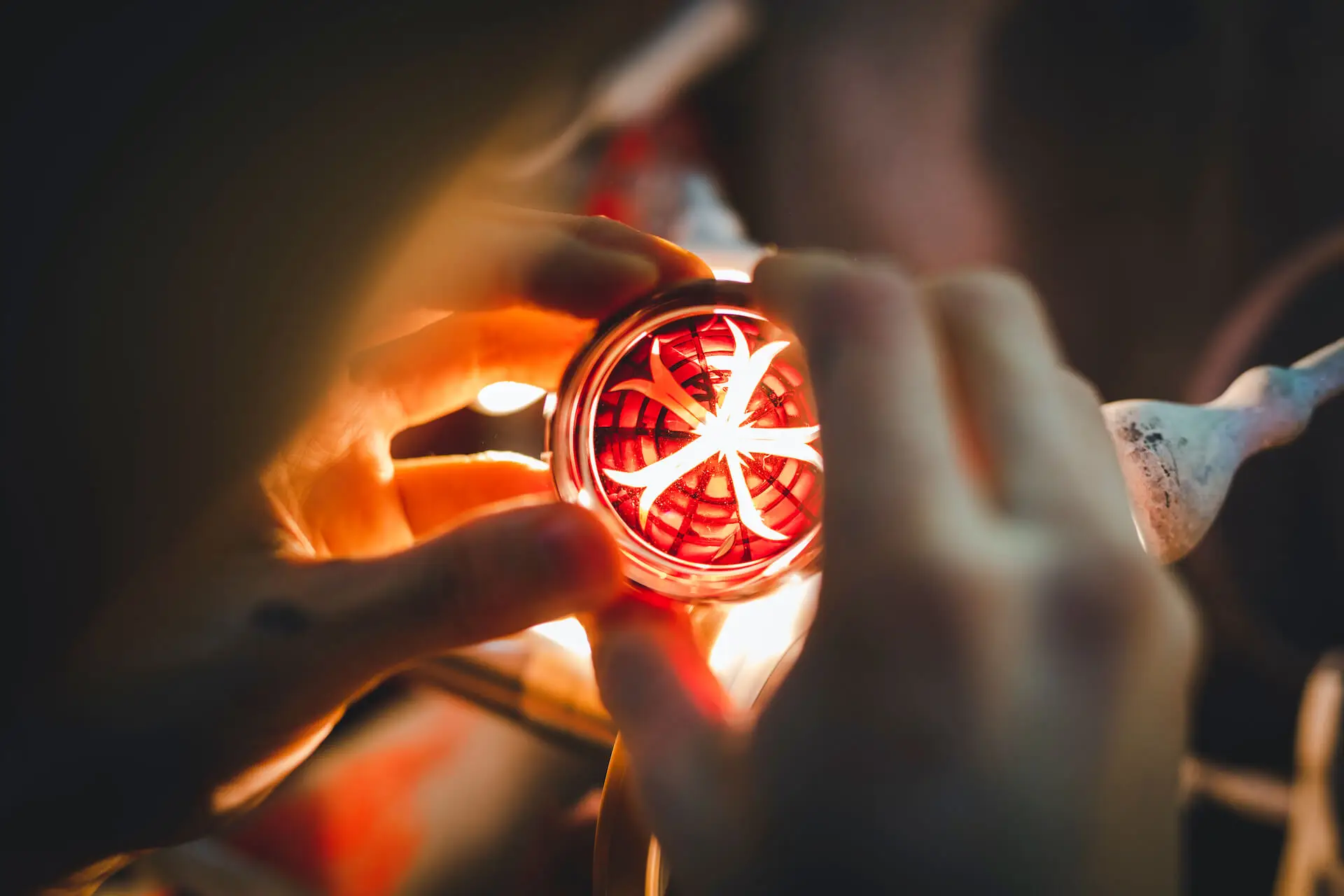
COLLABORATION OF BLOWING AND CARVING
Edo Kiriko glass – a handmade artistic tradition crystallizing the spirt of Tokyo. Glass hand-blown by Tajima Glass and carved and polished by artisan workshops such as Hanashyo offer you a perfect, breathtaking memento of Tokyo that will endure for generations.
Edo Kiriko is a traditional craft that represents Tokyo. They are a work of art that combines the craftsmanship of glassmakers and glass-carvers. To call it “Edo Kiriko”, the glass needs to be made through a process known as “Edo Glass”. Edo glass is blown glass covered with thin colored glass, handmade by craftsmen in Tokyo using the same method for 200 years. This Edo glass cut with traditional Tokyo patterns is the craft of Edo Kiriko. Each one is handmade, making the pieces unique.


Currently only seven producers can make Edo glass. Tajima Glass is one of them and they wholesale glass to Kiriko craftsmen in Tokyo and keep the art of true Edo Kiriko alive. In the atelier, dozens of craftsmen wrap glass melted at a high temperature of 1,400 degrees Celsius around a rod and blow into it until it is thin. Tajima Glass preserves traditional techniques while taking on innovative challenges to produce more than 10,000 products. One of their challenges has been to create black glass. Third generation Daisuke Tajima says, “Colored glass thinly stretched to 0.1mm-0.2mm usually becomes transparent, no matter how dark it was to begin with. After more than a year of trial and error, we were able to make the world's first completely non-transparent black glass.” The elegantly dressed black Kiriko featuring delicate patterns has been gifted to royal families overseas and has become a popular gift choice for VIPs around the world.


The Edo glass made by Tajima Glass is wholesaled to Kiriko artisans in Tokyo where they are cut into various patterns. Among them, “Hanashyo*” boasts outstanding technology. Their patterns are surprisingly fine, and some are as thin as a strand of hair. Third generation Takayuki Kumakura says, “The key to producing these delicate patterns lies in the polishing technique. After carving the glass, it’s generally immersed in a chemical such as sulfuric acid for several seconds to make it shine, but this process melts fine patterns, making them disappear. We use just water and spend three times the time it takes to cut the glass to hand-polish so that we can maintain the original color and strength of the glass. It can be used for generations without being damaged.” Each Edo Kiriko pattern holds a special meaning. “When we were asked to make gifts for guests attending a state summit or a present from Prime Minister Abe to former President Obama, we used patterns which symbolize national prosperity.” An Edo Kiriko can be used to drink wine or whiskey, decorate a room, and enjoyed in ways to fit your culture or lifestyle.








